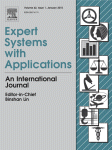Le Viet Hung, Silvia Caprari, Massimiliano Bizai, Daniele Toti and Fabio Polticelli
Bioinformatics
| Article’s link |
Abstract
Motivation: In recent years, structural genomics and ab initio molecular modeling activities are leading to the availability of a large number of structural models of proteins whose biochemical function is not known. The aim of this study was the development of a novel software tool that, given a protein’s structural model, predicts the presence and identity of active sites and/or ligand binding sites.
Results: The algorithm implemented by ligand binding site recognition application (LIBRA) is based on a graph theory approach to find the largest subset of similar residues between an input protein and a collection of known functional sites. The algorithm makes use of two predefined databases for active sites and ligand binding sites, respectively, derived from the Catalytic Site Atlas and the Protein Data Bank. Tests indicate that LIBRA is able to identify the correct binding/active site in 90% of the cases analyzed, 90% of which feature the identified site as ranking first. As far as ligand binding site recognition is concerned, LIBRA outperforms other structure-based ligand binding sites detection tools with which it has been compared.
Availability and implementation: The application, developed in Java SE 7 with a Swing GUI embedding a JMol applet, can be run on any OS equipped with a suitable Java Virtual Machine (JVM), and is available at the following URL: http://www.computationalbiology.it/software/LIBRAv1.zip.
 1900 2039
1900 2039 khcn@ntt.edu.vn
khcn@ntt.edu.vn





